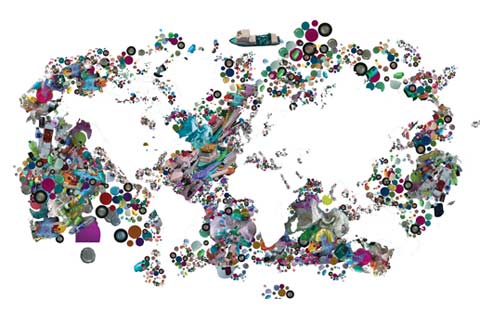WHO report says Delhi has worst air pollution
Updated: 2014-05-09 03:43
(Xinhua)
|
|||||||||||
Indian media quoted figures from the report showing that Delhi has the highest concentration of PM2.5 particles — those with a diameter of less than 2.5 microns, which can penetrate human lungs, seriously damaging health.
Air in the capital has a PM2.5 concentration of 153 micrograms per cubic meter (g/m), far above the WHO standard of just 10g/m, according to the Times of India.
The fine particulate pollution is significantly higher in Delhi than many other crowded Asian cities, including Beijing, which is given a PM2.5 level of 56g/m by the WHO report, while Shanghai is listed with concentration of 36g/m.
Karachi in Pakistan, meanwhile, is listed much higher, at 117g/m.
The concentration of PM10 — coarse particles — in Delhi is about 286g/m, more than 14 times higher than the WHO annual mean standard of 20g/m. Two other cities in Pakistan fare far worse on PM10: Peshawar at 540g/m and Rawalpindi at 448g/m.
Indian cities with a very high PM10 level include Gwalior, Raipur and Lucknow.
This is not the first time Delhi has earned the dubious distinction of having extremely polluted air. In January, Yale University's Environmental Performance Index 2014 ranked India among the bottom five in a list of 178 countries based on various criteria, including air pollution, according to the newspaper.
The university's figures sparked controversy in India after the data was interpreted as meaning Delhi's air quality was worse than that of Beijing. The government of Delhi and the ministry of earth sciences both denied this, but the Times of India said the latest WHO figures show that Beijing has better systems in place to deal with air pollution.
The newspaper quoted Dr Maria Neira, WHO director for Public Health, Environmental and Social Determinants of Health, as saying, "Cities such as Copenhagen and Bogota have improved air quality by promoting 'active transport' and prioritizing dedicated networks of urban public transport, walking and cycling."
Related Stories
Plants used to weed out soil pollution 2014-04-18 07:12
Soil survey paints sobering pollution picture 2014-04-17 19:37
Pollution discharge fees to rise dramatically 2014-04-16 07:07
100 cases of air pollution fined in March 2014-04-15 14:33
Today's Top News
Putin to meet western leaders in France
Property tracking system launched
Swiss move to reveal bank accounts will help China
Chinese police to patrol in Paris
Beijing rebuffs Hanoi's oil rig claims
Key Sino-Nigerian deals signed
EU: No armed intervention in Ukraine
Chinese premier visits Nigeria
Hot Topics
Lunar probe , China growth forecasts, Emission rules get tougher, China seen through 'colored lens', International board,
Editor's Picks

|

|

|

|

|

|





